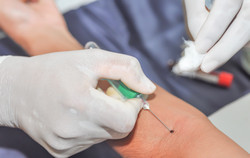How faster sepsis diagnoses could save lives and cut costs
The breakthrough has the potential to not only save lives but also to significantly cut healthcare costs. It thus presents European high tech SMEs with an opportunity to tap a huge market with an innovation that brings with it numerous benefits. The work, being carried out as part of the EU-funded CE-MICROARRAY project, aims to reduce the amount of time it takes to diagnose patients at risk of developing sepsis, one of the most common causes of death in hospitalised patients. Sepsis is a life-threatening illness caused by the body’s overreaction to an infection. It can be triggered either directly by infection, and can occur after medical treatment or surgery. It has been estimated that nearly 20 000 people die each day from sepsis worldwide and it is the cause of approximately half a million deaths in Europe each year. Early diagnosis is crucial, and can result in sizeable reductions in mortality rates. Unfortunately, current methods of diagnosing sepsis can take up to 72 hours. This is why the CE-MICROARRAY project’s innovation could have a significant impact. The project team has pioneered the use of ‘cavity enhanced absorption spectroscopy’. This method of analysis offers more sensitive, reliable and speedier diagnoses of patients at risk of developing sepsis. The technique involves improving the sensitivity of blood tests, which are based on light passing many times through the sample. The team are hopeful that this could lead to a test that could be up to 100 times more sensitive than conventional testing. This innovation is hoped to save health services across the world billions of euros, and there is significant market potential. In fact, the project has estimated the market opportunity to be greater than EUR 1 billion, with the potential to bring a cumulative profit of around EUR 38 million to the SME consortium over five years. One of the SME partners in the project for example is a company specialising in novel analytical systems, which was spun out of the research pioneered through CE-MICROARRAY. Project partners are currently working on producing prototype demonstrator instruments, in order bring the project results one step closer to commercialisation. CE-MICROARRAY has also worked on studying the characteristics of potential biomarkers that could be used for the diagnosis of sepsis risk. A number of suitable biomarkers have already been identified. This has been another key element of the project, and will help to build the foundations of the next generation of analytical sepsis tests. The project consortium comprises experienced SMEs from across Europe, many of which identified the healthcare and commercial opportunities of this technique but did not have the capability to undertake the required R&D to produce working prototypes. This is where EU funding has proved crucial. CE-MICROARRAY is scheduled for final completion in April 2016. For further information please visit: CEMICROARRAY project website
Countries
United Kingdom



